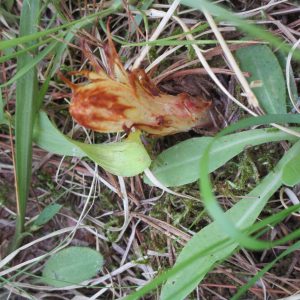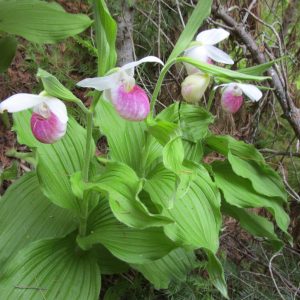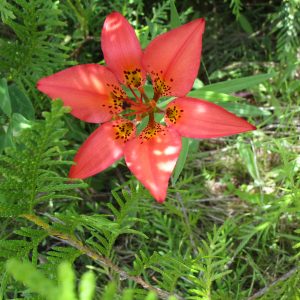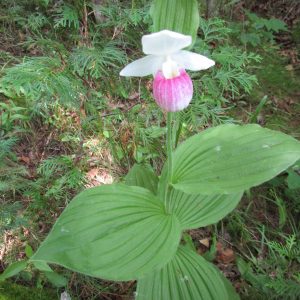I’m not sure where other interns are located but being with the Ouachita National Forest means that I live in this town called Hot Springs, named after the national park that is within it. Hot Springs National Park is the smallest park in the country but that doesn’t mean they skip out on the opportunity to be touristy. In fact, this is Central Ave stocked full of over priced boutiques as well as the famous national park bath houses (white buildings)
. 

Seeing as this is my first week of work and I’ll be in Chicago next week, I don’t have a full grasp on what I will do doing during the summer. However, that doesn’t mean this week has been slow. Tuesday and Wednesday were full of meetings with the Regional Geneticist who is in town to talk about the progress and future directions of the seed orchard.
If you don’t know what a seed orchard is, don’t worry because I had no clue that they existed either until this week. This one, that is about 45 minutes from Hot Springs, is one of 7 (I think?) in this region of the country that grows pine trees for the sole purpose of being able to collect seeds for restoration projects and things of that sort. The main purpose of the Ouachita Seed Orchard is to grow short-leaf pine (Pinus echinata) because unfortunately throughout the 1900’s the forests were devastated (Ben Rowland–handout from meeting). In the 60’s people started to realize the need to create stocks of high quality trees for future forest regeneration and this is why the seed orchards were created. The thing about pine seeds is that don’t last long, even when stored in frozen seed vaults (personal communication with Barb Crane) so it is necessary to maintain live trees in orchards so that the genetic variation isn’t lost.
(screenshot of my instagram story of the seed orchard because I didn’t take a real picture) –see how they are in rows? Stops the spread of disease from one tree to the next

The national forests are interesting because they need to combine the interests of loggers/hunters with the inherent value of the forest. This means that when the original ‘superior’ trees were selected for the orchard they looked at traits for loggers (how straight the trees are and how parallel the branches are) as well as health of the trees (disease resistance, survival, germination rates, etc).
All this talk about the importance of seed saving made me think of the seed vault in Svalbard. I decided to look on their website to see if they carry any tree species and they do! Although their main purpose is to focus on crops, in 2015 they did receive some pine and spruce seeds (Kinver). How long these seeds will stay viable in the bank, only time will tell. The importance of maintaining healthy plants that are producing seeds is obvious even with these seed banks. However, because of climate change the seed orchard may be at risk.
Something that was talked about a lot on Tuesday was the fact that shortleaf and loblolly pine are hybridizing. Usually due to temporal differences in time of pollination the rate of hybridization is less than 5% but in some areas the rate has been shown to be 40% (Tourer et al). It is theorized that this is because of warming that is altering the pollination cycle. To keep the species in the seed orchard pure more research needs to be done about why this is happening but also the fitness of these hybrids.However, what type of tree will be desirable in the future is unknown, making it hard to come up with strategies.
Regardless, this week I came away with a lot of knowledge of pine trees in the region but even more questions! What does the future of forest regeneration look like, especially with global warming. Should we allow these trees to hybridize and where are the arguments on either side coming from? Short leaf pine makes for better wood so you know the loggers don’t want the hybrids. Will it be impossible to keep pure trees and should we even continue trying to plant only pure trees out in the field?
Let’s just say my first week has shown me that learning doesn’t just stop when school ends, which for me was about three weeks ago. And that my blog posts may end up being mini research papers…hope you learned something!
P.S Something that I found really funny is the fire fighters share a building in the seed orchard and they converted an old green house into a gym–pictured below–Hope you find it as humorous as I did

Kinver, Mark. “Forest Tree Seeds Arrive at Svalbard’s ‘Doomsday Vault’.” BBC News, BBC, 2 Mar. 2015, www.bbc.com/news/science-environment-31661288.
Tauer, Charles G., et al. “Hybridization Leads to Loss of Genetic Integrity in Shortleaf Pine: Unexpected Consequences of Pine Management and Fire Suppression.” Journal of Forestry, vol. 110, no. 4, 2012, pp. 216–224., doi:10.5849/jof.11-044.
Ouachita National Forest




































